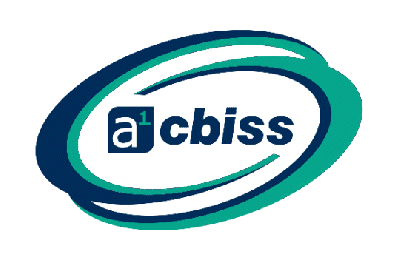The BACKGROUND
Peracetic acid (also known as peroxyacetic acid, or PAA), is an organic compound. It is a colourless liquid with a characteristic pungent odour similar to vinegar. All commercially available PAA products contain equilibrium of PAA, hydrogen peroxide, acetic acid, and water. Its formula is CH3CO3H.
Aseptic processes are used in the food and beverage industry to allow processed food to keep for long periods of time. It negates the use of preservatives as well as assure sterile packaging of plastic bottles, cardboard, and plastic containers.
Sterilants used in the food and drink industries are classified as hazardous substances. They must be carefully selected so that potential residues left on surfaces or in packaging materials are not harmful as they may affect product quality and safety.
The Control of Substances Hazardous to Health Regs 2002 (COSHH) requires the prevention or control to exposure of hazardous substances. Where exposure cannot be prevented, health and safety officers are required to assess the risk to health and provide adequate control measures when using hazardous chemicals.
The need for accurately monitoring PAA in the air has been identified by three major drinks manufacturers in the UK, where PAA monitoring systems have been successfully installed.
The aseptic line consists of equipment to sterilise, rinse, fill and cap bottles using Cleaning-In-Place (CIP) or Sterilisation-In-Place (SIP). These systems are the safer option for the internal disinfection of plant and equipment. This minimises exposure to plant operatives so long as the plant is maintained and safe systems of work are enforced.
The PROBLEM
The aseptic line procedures involve the use of Peracetic Acid (PAA) which is a liquid sterilant that is used to sterilise environments in food and beverage processing plants. Overexposure to PAA can cause severe physiological effects including:
- Irritation and burning of the skin and eyes leading to eye damage
- Irritation of the nose and throat
- Irritation of the lungs causing coughing and shortness of breath
- Long-term chronic health effects to the liver, heart and kidneys
To prevent exposure to PAA, air monitoring may be used to identify airborne concentrations around the plant. Although PAA does not have an occupational exposure limit currently, reference can be made to proposed Permitted Exposure Limits (PEL) in the United States, where the ACGIH have plans to set a short-term exposure limit (STEL) to 0.4ppm over a 15 min period. A number of PAA suppliers have also taken the lead and now state a recommended exposure limit of 0.4ppm on their datasheets.
Prior to working with a1-cbiss, the market didn’t have a means of directly testing PAA. Historically PAA has been “monitored” by using a Hydrogen Peroxide sensor whereas calculation was used to estimate how much airborne PAA was present. This method has been proved to be unreliable as in many cases the Hydrogen Peroxide sensors were detecting only 0.1ppm of Hydrogen Peroxide and yet the effects of overexposure to PAA were clear.
“The ChemDAQ Steri-Trac is the only system that is available for monitoring airborne PAA”
In partnership with ChemDAQ, a1-cbiss have launched the groundbreaking technology to the UK market and have been approached by a number of companies in the market to provide a complete PAA monitoring solution.
The SOLUTION
To provide protection against workers, a1-cbiss supply a continuous area gas monitoring system manufactured by ChemDAQ. This is the only system that is available on the market for monitoring airborne PAA. The ChemDAQ Steri-Trac system provides the optimal solution for workplace safety assurance, utilising low & high level configurable alarms and a data acquisition module.
The Steri-Trac sensors fed back the local PAA concentration to the DAQ (Data Acquisition) module where the real-time readings are calculated and reported into short and long term exposure limits.
a1-cbiss known for their engineering expertise completed a site survey to help specify the site requirements and the needs of the health and safety manager. The site survey identified that 16 sensors were required throughout the site. Not only were the sensors needed on the production line were PAA is present but also in other working areas where workers would move to should alarms sound in the production line areas.
Once the project was agreed, a1-cbiss drew up the project plan to include sensor positioning, cabling, and sensor outputs. a1-cbiss have a nationwide engineering and service team to carry out installation & commissioning.
The low-level alarms are set to provide a visual warning that there is a higher level of PAA than normal, whilst the high-level alarm thresholds are set to provide both a visual and audible alarm to warn the workers and give them an indication that the area is no longer safe to work in. Once the higher level alarm has sounded, it would be recommended to exit to a safer area.
Maintaining an accurate and reliable system is easy with the SXP (Sensor Exchange program). A contract is agreed with the customer to provide new sensors every 4 months. The sensor modules are plug and play, therefore do not require a service engineer on site.
Sound Return On Investment
Not only does the Steri-Trac offer the market reliable PAA monitoring, but the information gleaned by the system can also be used to optimise HVAC and air handling units within plant. Trials are underway to control air handling systems using the levels of PAA.
In some cases the number of air exchanges are calculated on a worst-case scenario, with an accurate survey of PAA levels within the production line it is thought that air exchanges and be either reduced or optimised therefore reducing energy costs over time.





